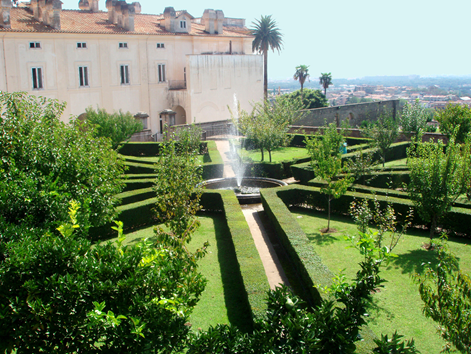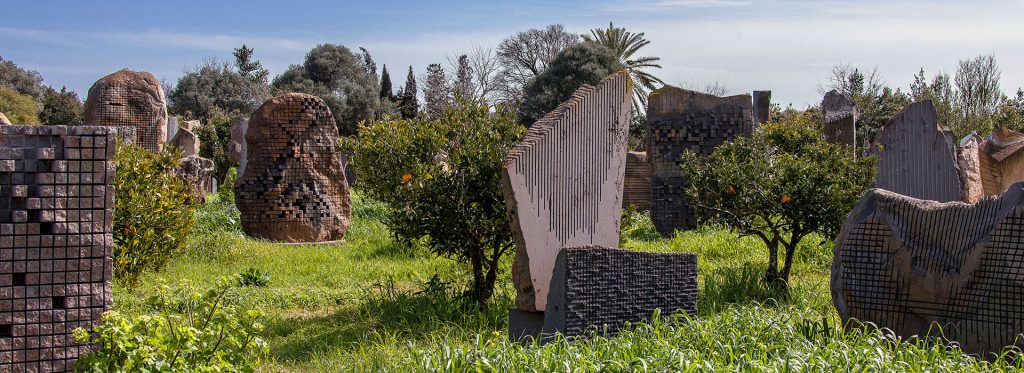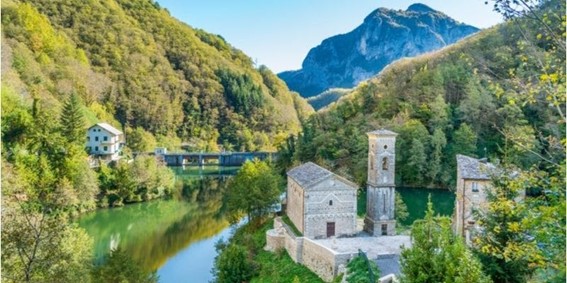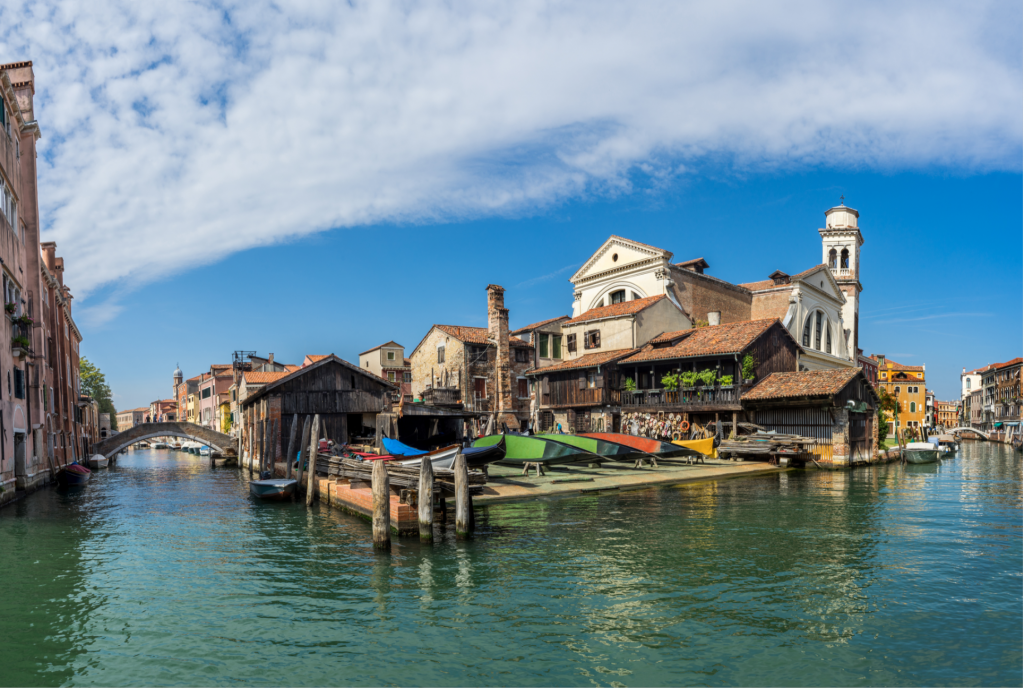All of Italy

Luca Poddi of luxury DMC Abercrombie & Kent recounts the San Leucio silk heritage: a social experiment dreamt up by royalty.
Tell us about the local hidden treasure.
The complex of San Leucio rises on Belvedere Hill, from which King Ferdinando IV, House of Bourbon, could gaze at his beautiful lands near the Royal Palace of Caserta, a UNESCO World Heritage Site. During his rule in the mid-18th Century, King Ferdinando IV was considered a revolutionary man. Indeed, he dreamt of an equal society in his special village of San Leucio inside his royal palace. He involved all the citizens in the creation and art of silk in a democratic life, where men and women were considered peers and lived in a meritocracy.
In San Leucio, every inhabitant had a proper house with running water and toilets: an element considered to be an extraordinary feat at the time. This also contributed to the social and industrial importance of the colony. From the maintenance of silkworms to the very final touch of a garment’s construction, San Leucio’s artisans did and still do an incredible job using the original looms and twisting machines, which were renovated in 2006 and are powered by hydro energy.
Have these silks gained wide recognition?
In past centuries, many nobles were festooned with the brocades and damasks from this little town, and royal palaces around the world were decorated with carpets and upholstery of these looms. Additionally, the original flags of the United States and Great Britain were made of Silk from San Leucio – a great honor for our artisans! Nowadays, these luxury fabrics can be spotted at White House and in the Vatican, to mention a few notable locations.
How can visitors best experience the village?
Visitors can explore the monumental weaving complex, the Silk Museum, and the Belvedere Palace’s royal apartments and casino in San Leucio. If your timing is right, you may even bear witness to a historical parade featuring drummers, fanfare, and folk dancers bedecked with period costumes – and of course, silk!
For more information about Abercrombie & Kent, click here.

Luxury DMC Abercrombie & Kent takes us on a journey to the Giardino Sonoro, an impressive sculpture park where art and nature come together.
What is the local hidden treasure?
Sardinia is a gem in the Mediterranean Sea. It boasts 2,000 kilometers of coastline, sandy beaches, and a mountainous interior, and its rugged landscape is dotted with thousands of nuraghi – ruins of mysterious beehive-shaped stone structures from the Bronze Age. With its own language, cuisine, and culture, there is no shortage of treasures on the island, but the Giardino Sonoro in San Sperate particularly special.
What makes it so special?
The unique village of San Sperate is one of Sardinia’s most artistic towns and a true open-air museum, with vibrant streets lined with mural-clad houses. The tradition of muralism was started by local artist Pinuccio Sciola, and today there are over 320 murals in town. However, Sciola’s Giardino Sonoro, or Sound Garden, offers hundreds of stones and boulders which have been sculpted by the artist since the 1960s to create musical instruments.
How can visitors best experience this gem?
Take a private tour of Pinuccio Sciola’s Museum House and workshop to get a feel for the artist’s process before taking a walk through a grove of citrus and megaliths.
Exploring the Sound Garden on your own gives you the chance to engage all your senses, making your own music in communion with nature by brushing or touching the stones to evoke a strange and beautiful music.
For more information about Abercrombie & Kent, click here.

Luxury DMC Abercrombie & Kent takes us on a journey along the Via Vandelli, an ancient path through marvelous mountain passes connecting the two home kingdoms of 18th Century lovers.
Where and what is the Vandelli Road?
The 150 kilometer stretch of Via Vandelli, or “Vandelli Road,” is an ancient path connecting the cities of Massa Carrara in northern Tuscany and Modena in the region of Emilia Romagna. Originally, this was a commercial road built by the two dukes of these cities when their heirs became engaged in 1738. The name comes from the important cartographer Abbot Domenico Vandelli, who was commissioned to complete this huge project realized in 1751.
Which are some highlights?
You’ll come across several Celtic huts and pass near the marvelous Lake Vagli and the village submerged beneath its waters as you follow a road built two centuries ago to connect two distinct worlds.
Lead us on a hike…
The itinerary starts from the small village of Resceto, on the edge of the Apuan Alps Regional Park. As you climb, the view soon becomes impressive: the high peak of Mount Tambura seems to keep watch over the path the whole way. A long series of turns quickly leads to higher ground, and the view opens onto the surrounding peaks. When you reach the Nello Conti Lodge, take a moment to relax. From there you can reach the Tambura Pass where the view of the mountains will take your breath away: sharp and stripped of their marble, they give the sense that they will soon plunge into the sea!
For more information about Abercrombie & Kent, click here.

Luxury DMC Abercrombie & Kent takes us to discover some of the long-standing heritage of Venice’s traditional craftsmanship.
The art of the Gondola
The historical Tramontin Squero workshop was founded in 1884 and specializes in the manufacturing of gondolas. Back then, Domenico Tramontin made some strategic changes to the gondola’s classic design, improvements later adopted by all other Venetian boat-makers and became the official supplier of the Royal House of Savoy, the police force, and many others. Nowadays, Elena and Elisabetta Tramontin are the fourth generation to run the Squero and continue the family traditions of building original Venetian gondolas.
The Art of the Forcola
In the floating city of Venice, the craft of the remèr, or Venetian oar-maker, has always been essential. The remèri of the city were officially recognized as a guild in 1307, but today, there are just three remèri active in the lagoon. At Saverio Pastor’s workshop, one can see the master work using centuries-old techniques to make oars and forcole, the typical Venetian wooden rowlock used in traditional Venetian boats. The Forcola is unlike any other type of rowlock, because the rowmen and gondolieri of Venice have developed a special rowing technique and position to propel the boat with a single oar. Without an expertly-crafted forcola, the lagoon’s well-known images of gondolas floating down the Grand Canal with upright gondoliers just wouldn’t be possible.
The Art of Rowing
Gloria Rogliani is Venice’s biggest female rowing champion and the most awarded woman in the field.
At her Cavana Tintoretto in the quiet neighborhood of Cannaregio, visitors can participate in a hands-on training session to learn how to row a typical Venetian boat, the colorful Batea da Fresco. Slide through the nearby canals under the expert eye of Gloria and her husband, Carlo, and put your balance to the test.
For more information about Abercrombie & Kent, click here.
